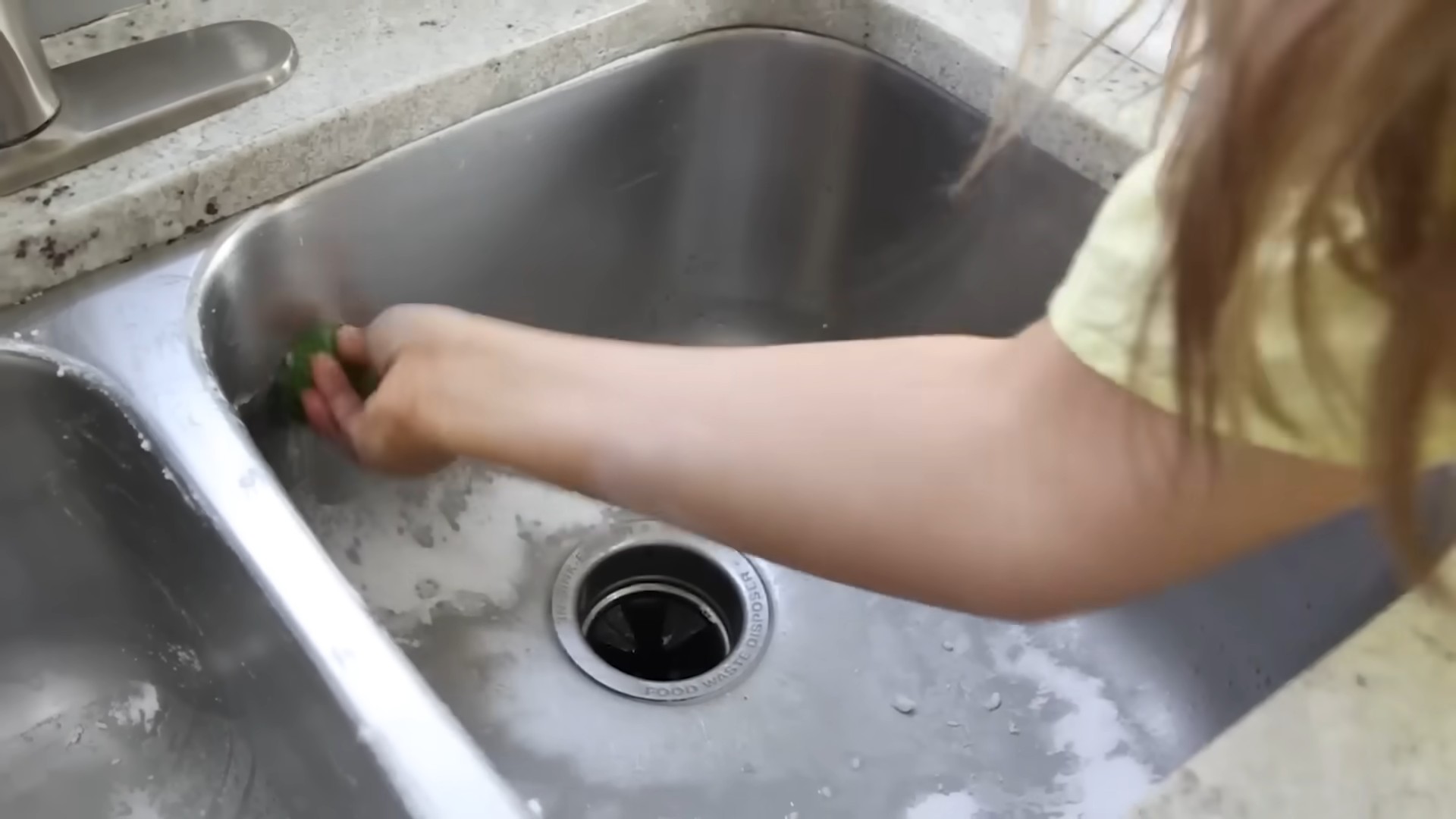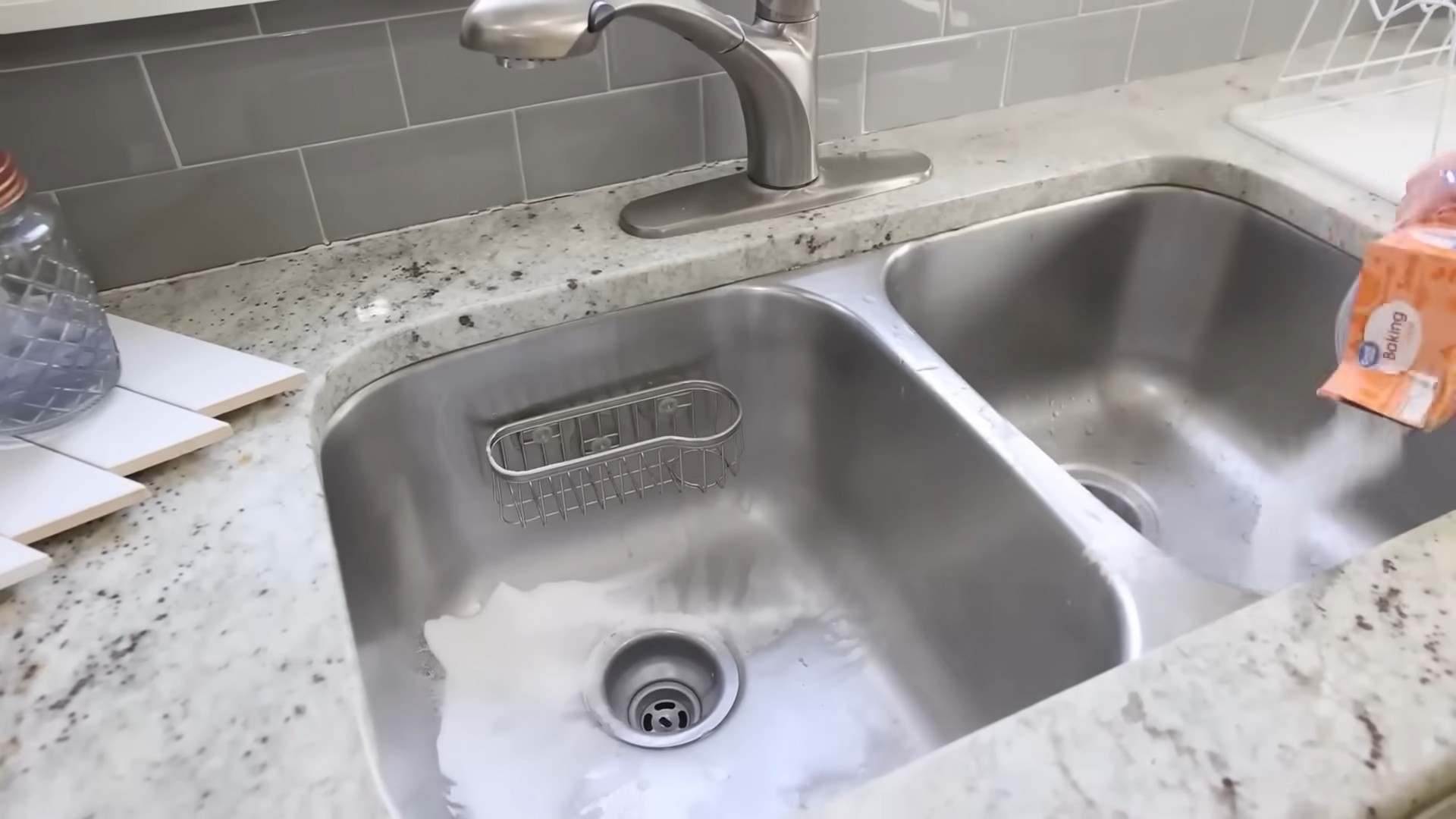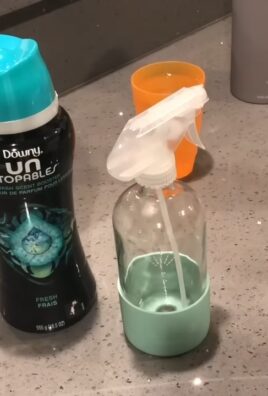Lime Cleaning Hacks: Your secret weapon for a sparkling home! Are you tired of battling stubborn grime and harsh chemicals? I know I was! For generations, our grandmothers relied on the power of natural ingredients to keep their homes clean, and limes were often a star player. Think about it – from ancient civilizations using citrus for medicinal purposes to modern-day cleaning solutions, the humble lime has a rich history of being a powerful, yet gentle, cleaning agent.
But why should you embrace lime cleaning hacks? Well, for starters, they’re incredibly effective! Limes contain citric acid, a natural disinfectant and degreaser that can tackle everything from hard water stains to sticky residue. Plus, they’re eco-friendly and budget-friendly, a win-win for both your home and your wallet. In this article, I’m going to share my favorite DIY lime cleaning tricks that will transform your cleaning routine. Get ready to ditch the harsh chemicals and unlock the natural cleaning power of limes!

DIY Lime Cleaning Hacks: Sparkling Clean with Citrus Power!
Hey everyone! I’m so excited to share some of my favorite lime cleaning hacks with you. Limes aren’t just for margaritas; they’re amazing natural cleaners! They’re packed with citric acid, which is a fantastic degreaser, disinfectant, and deodorizer. Plus, they smell incredible! Get ready to ditch those harsh chemicals and embrace the power of citrus.
General Tips for Lime Cleaning
Before we dive into the specific hacks, here are a few general tips to keep in mind:
* Always test in an inconspicuous area first. While limes are generally safe, it’s always a good idea to test them on a small, hidden area of whatever you’re cleaning to make sure they don’t cause any discoloration or damage.
* Use fresh limes for the best results. The fresher the lime, the more potent the citric acid.
* Wear gloves if you have sensitive skin. The acidity of limes can irritate some people’s skin.
* Don’t use limes on delicate surfaces like marble or granite. The acid can etch these surfaces.
* Rinse thoroughly after cleaning. This will remove any lime residue and prevent stickiness.
* Combine with other natural cleaners. Limes work great on their own, but you can also boost their cleaning power by combining them with baking soda, vinegar, or salt.
Cleaning Your Microwave with Lime
Microwaves can get pretty gross, pretty quickly. Splattered food, lingering odors – it’s not a pretty sight. But don’t worry, a lime can fix that!
What you’ll need:
* 1 lime
* 1 cup of water
* Microwave-safe bowl
* Sponge or cloth
Step-by-step instructions:
1. Prepare the lime. Cut the lime in half. Squeeze the juice from both halves into the microwave-safe bowl. Then, drop the lime halves into the bowl as well.
2. Add water. Pour one cup of water into the bowl with the lime juice and halves.
3. Microwave the mixture. Place the bowl in the microwave and microwave on high for 3-5 minutes, or until the water is boiling and the microwave is filled with steam.
4. Let it sit. Leave the microwave door closed for another 5-10 minutes. This allows the steam to loosen any stuck-on food particles.
5. Wipe it clean. Carefully remove the bowl (it will be hot!). Use a sponge or cloth to wipe down the inside of the microwave. The grime should come off easily.
6. Rinse and dry. If necessary, rinse the inside of the microwave with a clean, damp cloth. Then, dry it with a clean towel.
Your microwave should now be sparkling clean and smell wonderfully fresh!
Deodorizing Your Garbage Disposal with Lime
Garbage disposals can be a breeding ground for unpleasant odors. Limes to the rescue!
What you’ll need:
* Lime wedges or peels
Step-by-step instructions:
1. Collect lime scraps. Save your lime wedges or peels after using them for drinks or cooking.
2. Grind the lime. Turn on the cold water and run the garbage disposal. Drop the lime wedges or peels into the disposal.
3. Let it run. Let the disposal run for about 30 seconds to grind up the lime.
4. Turn off the disposal and water. That’s it! The lime will help to deodorize the disposal and leave a fresh, citrusy scent.
I usually do this once a week to keep my garbage disposal smelling fresh.
Cleaning and Shining Faucets and Fixtures with Lime
Hard water stains and soap scum can make faucets and fixtures look dull and grimy. Lime juice can cut through the buildup and restore their shine.
What you’ll need:
* 1 lime
* Soft cloth
Step-by-step instructions:
1. Cut the lime. Cut the lime in half.
2. Rub the lime on the fixtures. Rub the cut side of the lime directly onto the faucets and fixtures, focusing on areas with hard water stains or soap scum.
3. Let it sit. Allow the lime juice to sit on the fixtures for a few minutes (5-10 minutes should do the trick).
4. Wipe clean. Use a soft cloth to wipe away the lime juice and any loosened grime.
5. Rinse and dry. Rinse the fixtures with water and dry them with a clean towel.
Your faucets and fixtures should now be sparkling clean and shiny!
Removing Rust Stains with Lime and Salt
Rust stains can be tough to remove, but a combination of lime and salt can work wonders.
What you’ll need:
* 1 lime
* Salt
* Scrub brush or sponge
Step-by-step instructions:
1. Prepare the paste. Cut the lime in half. Squeeze the juice from one half of the lime onto the rust stain.
2. Apply salt. Sprinkle a generous amount of salt onto the lime juice. The salt acts as an abrasive to help scrub away the rust.
3. Scrub the stain. Use a scrub brush or sponge to scrub the rust stain vigorously.
4. Let it sit. Allow the lime juice and salt mixture to sit on the stain for 30 minutes to an hour.
5. Scrub again. Scrub the stain again with the brush or sponge.
6. Rinse and dry. Rinse the area thoroughly with water and dry it with a clean towel.
You may need to repeat this process a few times for stubborn rust stains.
Cleaning Cutting Boards with Lime and Salt
Cutting boards can harbor bacteria and odors, especially after cutting raw meat or vegetables. Lime and salt can help to disinfect and deodorize them.
What you’ll need:
* 1 lime
* Coarse salt (like sea salt or kosher salt)
Step-by-step instructions:
1. Sprinkle salt. Sprinkle a generous amount of coarse salt onto the cutting board.
2. Rub with lime. Cut the lime in half. Use the cut side of the lime to rub the salt into the cutting board. Apply firm pressure and scrub the entire surface.
3. Let it sit. Allow the lime juice and salt mixture to sit on the cutting board for 5-10 minutes.
4. Rinse and dry. Rinse the cutting board thoroughly with warm water and dry it with a clean towel.
This method works great for both wooden and plastic cutting boards.
Freshening Up Your Fridge with Lime
A lingering odor in the fridge? A half-used lime can help!
What you’ll need:
* Half a lime
Step-by-step instructions:
1. Place the lime. Simply place the half lime, cut-side up, in your refrigerator.
2. Leave it overnight. Leave it overnight, or even for a few days, to absorb odors.
This is a super simple way to keep your fridge smelling fresh!
Bonus Tip: Making a Lime-Infused All-Purpose Cleaner
Want to create your own all-purpose cleaner with lime? Here’s how:
What you’ll need:
* Lime peels (from several limes)
* White vinegar
* Spray bottle
Step-by-step instructions:
1. Collect lime peels. Save the peels from several limes.
2. Infuse the vinegar. Place the lime peels in a jar and cover them with white vinegar.
3. Let it steep. Seal the jar and let it steep for 2-3 weeks. This allows the vinegar to absorb the lime’s scent and cleaning properties.
4. Strain the vinegar. After 2-3 weeks, strain the vinegar to remove the lime peels.
5. Dilute the cleaner. Pour the lime-infused vinegar into a spray bottle and dilute it with water (a 1:1 ratio is a good starting point).
6. Use as an all-purpose cleaner. Use this cleaner to clean countertops, sinks, and other surfaces.
This lime-infused vinegar cleaner is a great alternative to store-bought all-purpose cleaners.
I hope you enjoy these lime cleaning hacks as much as I do! They’re a natural, effective, and eco-friendly way to keep your home clean and fresh. Happy cleaning!

Conclusion
So, there you have it! Ditching harsh chemicals and embracing the power of nature has never been easier. This simple yet incredibly effective lime cleaning hacks method is a game-changer for anyone looking to maintain a sparkling clean home without compromising their health or the environment. We’ve walked you through the process, highlighting the versatility and cost-effectiveness of using limes as a natural cleaning agent.
But why is this a must-try? Beyond the obvious benefits of being eco-friendly and budget-conscious, lime cleaning offers a unique freshness that synthetic cleaners simply can’t replicate. The invigorating citrus scent lingers long after the cleaning is done, leaving your home feeling revitalized and welcoming. Plus, the natural acidity of limes makes them surprisingly powerful against grease, grime, and even stubborn stains.
Don’t just limit yourself to the methods we’ve outlined! Feel free to experiment and adapt these techniques to suit your specific needs. For instance, if you’re dealing with particularly tough stains, try letting the lime juice sit for a longer period before scrubbing. You can also create a potent cleaning paste by mixing lime juice with baking soda for extra abrasive power. For a refreshing all-purpose cleaner, infuse lime peels in vinegar for a few weeks, then dilute with water. The possibilities are endless!
We encourage you to take the plunge and give these lime cleaning hacks a try. You’ll be amazed at the results. Not only will you achieve a spotless home, but you’ll also be contributing to a healthier planet. We’re confident that once you experience the cleaning power of limes, you’ll never go back to harsh chemicals again.
But the real magic happens when we share our experiences. We’d love to hear about your own lime cleaning adventures! Did you discover a new and innovative way to use limes for cleaning? Did you find a particular surface or stain that limes conquered with ease? Share your tips, tricks, and stories in the comments below. Let’s build a community of eco-conscious cleaners who are passionate about harnessing the power of nature to create sparkling clean and healthy homes. Your insights could inspire others to make the switch and embrace the wonderful world of lime cleaning. So, grab a lime, get cleaning, and let us know how it goes! We can’t wait to hear from you.
Frequently Asked Questions (FAQs)
What types of limes are best for cleaning?
While any type of lime will work for cleaning, the most common and readily available varieties, such as Persian limes (often found in grocery stores), are perfectly suitable. Key limes, known for their intense flavor, can also be used, but they tend to be more expensive. The key is to use fresh limes, as they contain the highest concentration of citric acid, which is the active cleaning agent. Avoid using limes that are overly ripe or have started to dry out, as they will be less effective.
Can I use bottled lime juice instead of fresh limes?
While bottled lime juice can be used in a pinch, it’s generally not as effective as fresh limes. Bottled lime juice often contains preservatives and may have a lower concentration of citric acid. Fresh limes provide the best cleaning power and a more vibrant scent. If you do use bottled lime juice, be sure to choose a brand that is 100% lime juice and doesn’t contain any added sugars or artificial ingredients. You may also need to use a larger quantity of bottled juice to achieve the same results as fresh limes.
What surfaces can I safely clean with limes?
Limes are generally safe to use on a variety of surfaces, including stainless steel, glass, ceramic tile, porcelain, and some plastics. However, it’s important to exercise caution when using limes on delicate or porous surfaces, such as marble, granite, or wood. The acidity of lime juice can etch or stain these materials. Always test a small, inconspicuous area first to ensure that the lime juice doesn’t cause any damage. Avoid using limes on painted surfaces, as the acidity can fade or discolor the paint.
How do I remove lime residue after cleaning?
After cleaning with limes, it’s important to rinse the surface thoroughly with clean water to remove any lime residue. Lime residue can leave a sticky or cloudy film if left to dry. For stubborn residue, you can use a damp cloth or sponge to wipe the surface clean. If you’re cleaning glass or mirrors, use a microfiber cloth to prevent streaks.
How long will a lime cleaning solution last?
A lime cleaning solution made with fresh lime juice is best used immediately. The citric acid in lime juice can degrade over time, reducing its cleaning power. If you need to store a lime cleaning solution, keep it in an airtight container in the refrigerator for no more than 24 hours. However, for optimal results, it’s always best to make a fresh batch each time you clean.
Can I use lime peels for cleaning?
Yes, lime peels can be used for cleaning! They contain essential oils that have degreasing and deodorizing properties. You can use lime peels to scrub surfaces, freshen garbage disposals, or infuse vinegar for a natural cleaning solution. To freshen a garbage disposal, simply toss a few lime peels into the disposal and run it with cold water. To make a lime-infused vinegar cleaner, place lime peels in a jar, cover them with white vinegar, and let them steep for a few weeks. Then, strain the vinegar and dilute it with water before using it as an all-purpose cleaner.
Are there any safety precautions I should take when cleaning with limes?
While limes are generally safe to use, it’s always a good idea to take a few safety precautions. Avoid getting lime juice in your eyes, as it can cause irritation. If you do get lime juice in your eyes, rinse them thoroughly with water. If you have sensitive skin, wear gloves when cleaning with limes to prevent irritation. Also, be mindful of the surfaces you’re cleaning and test a small area first to ensure that the lime juice doesn’t cause any damage.
What are some other uses for limes in cleaning besides the ones mentioned in the article?
Limes are incredibly versatile and can be used for a variety of cleaning tasks. You can use them to:
* Remove hard water stains from faucets and showerheads.
* Deodorize cutting boards.
* Clean and shine copper pots and pans.
* Remove rust stains from clothing.
* Brighten white laundry.
* Clean microwave.
How do I dispose of used limes after cleaning?
Used limes can be composted or added to your garden. They are a great source of nutrients for plants and can help to improve soil quality. Alternatively, you can simply discard them in the trash.
Can I use lime cleaning hacks to clean my toilet?
Yes, you can use lime cleaning hacks to clean your toilet! The acidity of lime juice can help to remove stains and deodorize the toilet bowl. Simply pour some lime juice into the toilet bowl, let it sit for a few minutes, then scrub with a toilet brush and flush. For stubborn stains, you can create a paste of lime juice and baking soda and apply it to the stains before scrubbing.





Leave a Comment